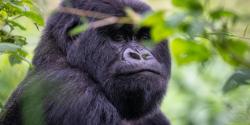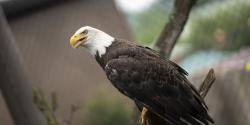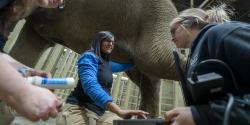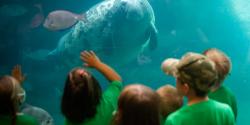This reptile gets its name from the bright yellow "radiating" star pattern on its shell. Unfortunately, this unique shell also makes them a target for the international wildlife trade. This, combined with habitat loss, has led to a rapid decline in population size over the last two decades.
At the Columbus Zoo, we’re dedicated to the conservation of radiated tortoises, specifically through our participation in The Association of Zoos and Aquariums' (AZA) Saving Animals from Extinction (SAFE) program and by supporting the Turtle Survival Alliance.
Scientific Name: Astrochelys radiata
Conservation Status: Critically Endangered
Size: Shell length of up to 16 inches
Weight: Up to 35 lbs.
Median Life Expectancy:









